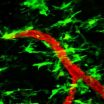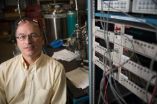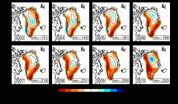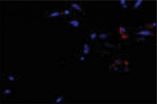(Press-News.org) Tension is the theme running through the new consensus statement issued by the Hinxton Group, an international working group on stem cell research and regulation. Specifically, tension between intellectual property policies and scientific norms of free exchange, but also between eastern and western cultures, national and international interests, and privatized vs. nationalized health care systems.
The consensus, titled Statement on Data and Materials Sharing and Intellectual Property in Pluripotent Stem Cell Science in Japan and China, was released on the Hinxton Group's website Monday, November 19, 2012.
"China and Japan are among the world's leading nations in stem cell research, but because of challenges distinct from western nations, they are dramatically underrepresented in terms of patents and licensing," says Debra Mathews, PhD, MA, assistant director of Science Programs at the Johns Hopkins Berman Institute of Bioethics and a founding member of the Hinxton Group. Mathews was one of 22 co-signers of the consensus statement.
"We thought it was crucial, with the science advancing incredibly rapidly, and as intellectual property policies evolve in East Asia, to examine our 2010 global recommendations for proprietary issues in stem cell research in that regional context," Mathews says.
Strengthening national stem cell innovation was the top goal articulated in Kobe, the statement says. Whereas in the West there is a robust and mature infrastructure for encouraging and supporting the development of intellectual property rights such as patents, East Asian nations like China and Japan have comparatively less well-developed, younger systems, the group observes. While this can make it more difficult to bring new inventions to international markets, the statement says, the opportunities created by the regional environment in Japan and China provide valuable lessons for the global development of this field.
"For example, as noted in the statement, Japan and China each have a large and highly qualified scientific workforce, paired with substantial national investment in stem cell research," says Mathews. "This combination of factors means that both countries are well-situated to take the kinds of collective action that will be required to move the field forward efficiently and translate basic science discoveries into products and therapies."
An area where Japan and China exercise strong state control to the possible benefit of stem cell-based invention is their national health care systems, the statement notes. In the West, strong intellectual property rights have encouraged the "development of stand-alone blockbuster products," the group says, whereas the national health systems in East Asia may allow patients access to more individualized, innovative treatments. This, the group posits, could be a model for stem cell-based therapies.
"Innovation in China and Japan occurs in the context of national commitments to public health, and as a practical matter that should make access to cell-based therapies more equitable," Mathews says.
The statement also notes the significant cultural differences that contribute to challenges — and opportunities — with intellectual property policy, practice and stem cell research in the region. The group notes that Japan and China are "markedly less litigious" than western nations, and recognition for scientific work and publication priority are highly valued. "Secrecy appears to be a relatively more common mode of protecting researchers' raw [intellectual property rights], as opposed to more formalized legal systems of protection, such as patenting," the statement says. In light of this, an appropriate incentive to sharing data and materials among scientists in the region would be the protection of their interests and rights, perhaps through a grace or priority period, the group says, during which the data is public but the original scientists have exclusive rights to publish.
The statement also discusses the challenges of sharing data and materials internationally, noting an "underlying tension between national and international interests." In China, for example, samples donated by citizens are considered intellectual property of the state and are governed by strict polices that create roadblocks to international sharing and access. Such policies, varying country by country, may present significant challenges to the Hinxton Group's goal of creating an internationally coordinated stem cell bank, the statement says.
"There will always be tensions between national and international and between public and private," as far as innovation and the protection of that innovation, the group says. "Within the biomedical sciences, the key is to strike a balance that both promotes innovation and improves global health," the statement concludes.
###
English Consensus Statement: http://www.hinxtongroup.org/consensus_hg12_final.pdf
Japanese and Chinese translations will be posted at www.hinxtongroup.org as soon as they are available.
About the Johns Hopkins Berman Institute of Bioethics:
One of the largest centers of its kind in the world, the Johns Hopkins Berman Institute of Bioethics is the home for collaborative scholarship and teaching on the ethics of clinical practice, public health and biomedical science at Johns Hopkins University. Since 1995, the Institute has worked with governmental agencies, nongovernmental organizations and private sector organizations to address and resolve ethical issues. Institute faculty members represent such disciplines as medicine, nursing, law, philosophy, public health and the social sciences. More information is available at www.bioethicsinstitute.org.
END
UNIVERSITY PARK, Pa. -- Sibling conflict represents parents' number one concern and complaint about family life, but a new prevention program -- designed and carried out by researchers at Penn State -- demonstrates that siblings of elementary-school age can learn to get along. In doing so, they can improve their future health and well-being.
"Negative sibling relationships are strongly linked to aggressive, anti-social and delinquent behaviors, including substance use," said Mark Feinberg, research professor in the Prevention Research Center for the Promotion of Human ...
High-resolution real-time images show in mice how nerves may be damaged during the earliest stages of multiple sclerosis. The results suggest that the critical step happens when fibrinogen, a blood-clotting protein, leaks into the central nervous system and activates immune cells called microglia.
"We have shown that fibrinogen is the trigger," said Katerina Akassoglou, Ph.D., an associate investigator at the Gladstone Institute for Neurological Disease and professor of neurology at the University of California, San Francisco, and senior author of the paper published ...
The National Science Foundation is suggesting adding a bit of spice to a geophysical scientist's research recipe of rocks, water, air, space and life:
Humans.
At next month's Fall Meeting of the American Geophysical Union (AGU) a behemoth of a conference of nearly 20,000 Earth and space scientists, educators, students and policy makers, an international group of scientists will make the case for adding the human element to their research.
The International Network of Research in Coupled Human and Natural Systems – CHANS-Net – is supported by the National Science ...
LEXINGTON, Ky. (Nov. 27, 2012) -- Digoxin, a drug widely used to treat heart disease, increases the possibility of death when used by patients with a common heart rhythm problem − atrial fibrillation (AF), according to new study findings by University of Kentucky researchers. The results have been published in the prestigious European Heart Journal, and raises serious concerns about the expansive use of this long-standing heart medication in patients with AF.
UK researchers led by Dr. Samy Claude Elayi, associate professor of medicine at UK HealthCare's Gill Heart ...
LA JOLLA, CA – November 27, 2012 – Researchers at The Scripps Research Institute (TRSI) are fueling the future of cancer treatment by improving a powerful tool in disease defense: the body's immune system. By revealing a novel but widespread cell signaling process, the scientists may have found a way to manipulate an important component of the immune system into more effectively fighting disease.
The study, recently published online ahead of print by the journal Blood, shows that disabling a particular enzyme, called ItpkB, in mice improves the function of a type of immune ...
By using common materials found pretty much anywhere there is dirt, a team of Michigan State University researchers have developed a new thermoelectric material.
This is important, they said, because the vast majority of heat that is generated from, for example, a car engine, is lost through the tail pipe. It's the thermoelectric material's job to take that heat and turn it into something useful, like electricity.
The researchers, led by Donald Morelli, a professor of chemical engineering and materials science, developed the material based on natural minerals known ...
VIDEO:
Princeton University researchers developed an enhanced approach to capturing changes on the Earth's surface via satellite that could provide a more accurate account of how geographic areas change as a...
Click here for more information.
An enhanced approach to capturing changes on the Earth's surface via satellite could provide a more accurate account of how ice sheets, river basins and other geographic areas are changing as a result of natural and human factors. ...
Toronto, ON (27 November, 2012) -- A new method of growing cardiac tissue is teaching old stem cells new tricks. The discovery, which transforms aged stem cells into cells that function like much younger ones, may one day enable scientists to grow cardiac patches for damaged or diseased hearts from a patient's own stem cells—no matter what age the patient—while avoiding the threat of rejection.
Stem cell therapies involving donated bone marrow stem cells run the risk of patient rejection in a portion of the population, argues Milica Radisic, Canada Research Chair in ...
Parents may have some new motivations to serve their kids vegetables. A new Cornell University study, published in Public Health Nutrition, found that by simply serving vegetables with dinner, the main course would taste better and the preparer was perceived to be more thoughtful and attentive.
"Most parents know that vegetables are healthy, yet vegetables are served at only 23% of American dinners," said lead author Brian Wansink, PhD, the John Dyson Professor of Marketing and Consumer Behavior at Cornell University. "If parents knew that adding vegetables to the plate ...
Boulder, Colo., USA – GSA Bulletin articles posted online between 2 October and 21 November span locations such as the San Andreas fault, California; Tibet; Mongolia; Maine; the Owyhee River, Oregon; the Afar Rift, Ethiopia; Wyoming; Argentina; the Sinai Peninsula, Egypt; British Columbia; the southern Rocky Mountains; Scandinavia; and Saturn's largest moon, Titan. Topics include the "big crisis" in the history of life on Earth; the structural geology of Mount St. Helens; and the evolution of a piggyback basin.
GSA Bulletin articles published ahead of print are online ...






